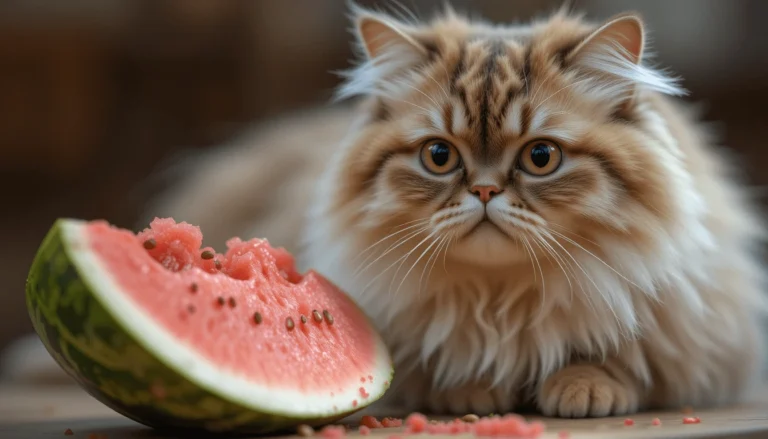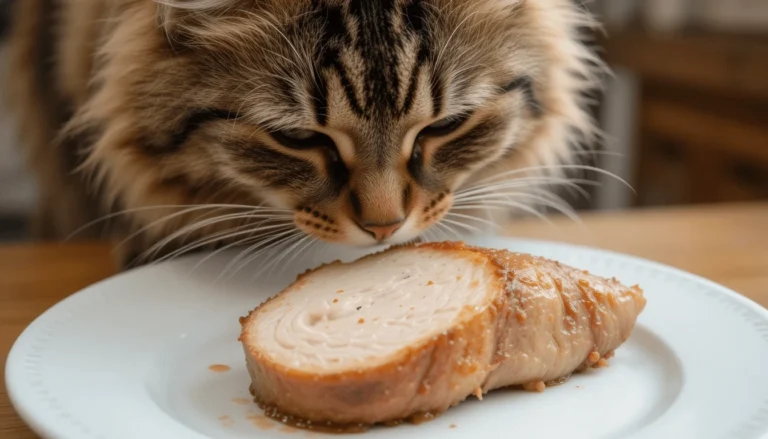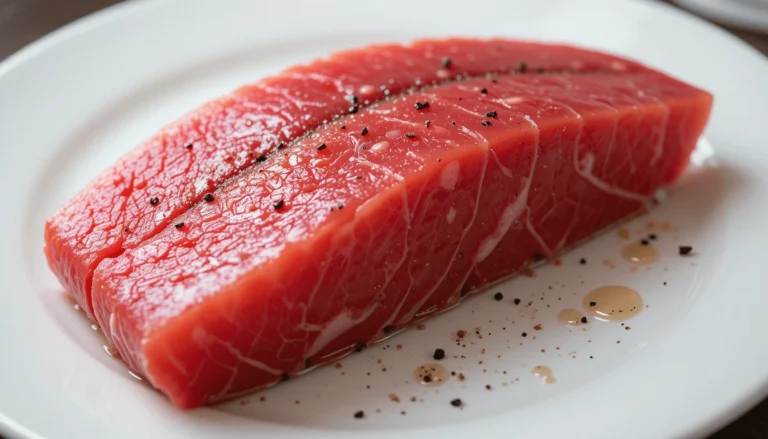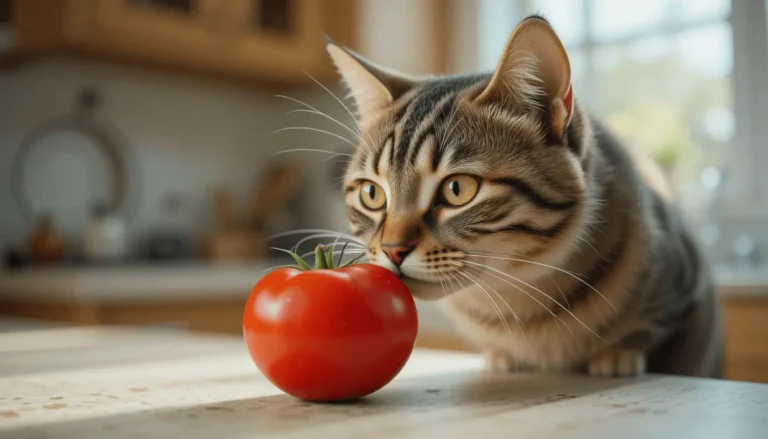Can Cats Eat Spicy Food? The Truth About Feline Taste
Introduction
Picture this: You’re enjoying a plate of spicy buffalo wings when your cat jumps onto the table, whiskers twitching with curiosity. As they lean in for a sniff, their nose wrinkles, their head jerks back, and they quickly retreat as if offended. This comical yet telling reaction reveals an important truth: cats and spicy foods simply don’t mix.
But why? Unlike humans, who might crave the burning sensation of chili peppers, cats are biologically wired to avoid spice. Their taste buds, digestive systems, and even their evolutionary history all play a role in this aversion. In this article, we’ll explore:
- The science behind feline taste buds (and why they can’t handle heat)
- The real dangers of spicy foods for cats (beyond just disliking the flavor)
- Safe, cat-approved alternatives to keep your furry friend happy
By the end, you’ll understand why that plate of spicy tacos should stay far away from your cat—and what treats they’ll actually enjoy.
Why Cats Reject Spicy Foods
No Taste for Heat: Missing TRPV1 Receptors
Our bodies contain special TRPV1 receptors designed to detect capsaicin – the chemical that gives chili peppers their fiery kick. These receptors send a “burning” signal to our brains, creating that familiar fiery sensation.
Cats, however, lack these receptors entirely. According to research from the Monell Chemical Senses Center, cats show no neurological response to capsaicin. This means:
- They don’t experience the “spicy” sensation at all.
- Instead, they may taste only bitterness or nothing.
- Their bodies aren’t equipped to process or enjoy heat.
Fun fact: This is also why cats don’t react to “hot” foods the way dogs or humans do—they simply can’t perceive the spice!
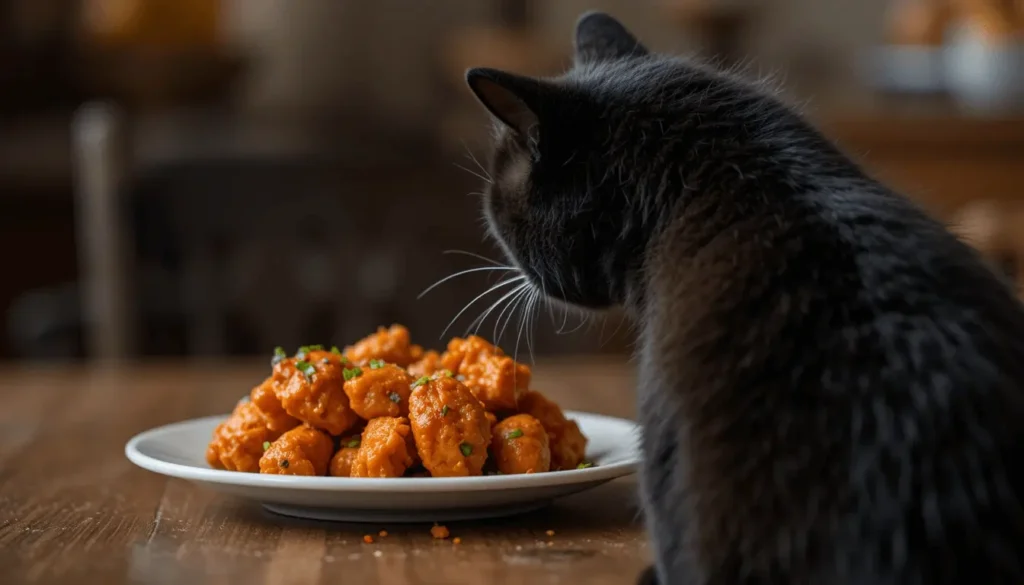
Evolutionary Diet: Obligate Carnivores Don’t Need Spice
Cats are obligate carnivores, meaning their bodies are designed to thrive on meat—not plants, grains, or spices. Studies from the Journal of Nutrition show that cats have:
- Fewer taste buds than humans (about 470 vs. our 9,000).
- No sweetness receptors (they can’t taste sugar).
- A strong preference for umami (the savory taste of meat).
Since spicy flavors come from plants (like peppers), cats have zero biological reason to seek them out. Their taste buds are fine-tuned for meat, not complex spices.
Instinctive Avoidance: Spicy Smells Signal Danger
A cat’s sense of smell is 14 times stronger than a human’s (Cornell University College of Veterinary Medicine). This means:
- They can detect toxic compounds in spices (like garlic and onion) before even tasting them.
- Pungent, spicy aromas trigger a natural “avoidance” response—their bodies know these foods could be harmful.
- Even if they accidentally lick something spicy, their instinct is to back off immediately.
Real-life example: If you’ve ever seen your cat sniff a jalapeño and then dramatically shake their head, this is why! Their nose is warning them to stay away.
The Hidden Dangers of Spicy Foods for Cats
Digestive Upset: Vomiting, Diarrhea, and Pain
Even a tiny amount of spicy food can cause:
- Stomach irritation (leading to vomiting)
- Inflammation in the intestines (resulting in diarrhea)
- Discomfort and excessive drooling
Capsaicin isn’t just unappetizing to cats—it’s an irritant to their digestive system.
Toxic Ingredients in Spicy Dishes
Many spicy human foods contain hidden dangers, such as:
- Garlic & onion (can cause anemia by destroying red blood cells)
- Excessive salt (leads to dehydration and kidney strain)
- Artificial additives (preservatives, flavor enhancers)
According to the ASPCA, these ingredients are toxic to cats and should never be given.
Long-Term Health Risks
Repeated exposure to spicy foods may contribute to:
- Chronic digestive issues
- Kidney or liver stress (from processing unnatural compounds)
- Nutritional imbalances (if spicy foods replace proper cat food)
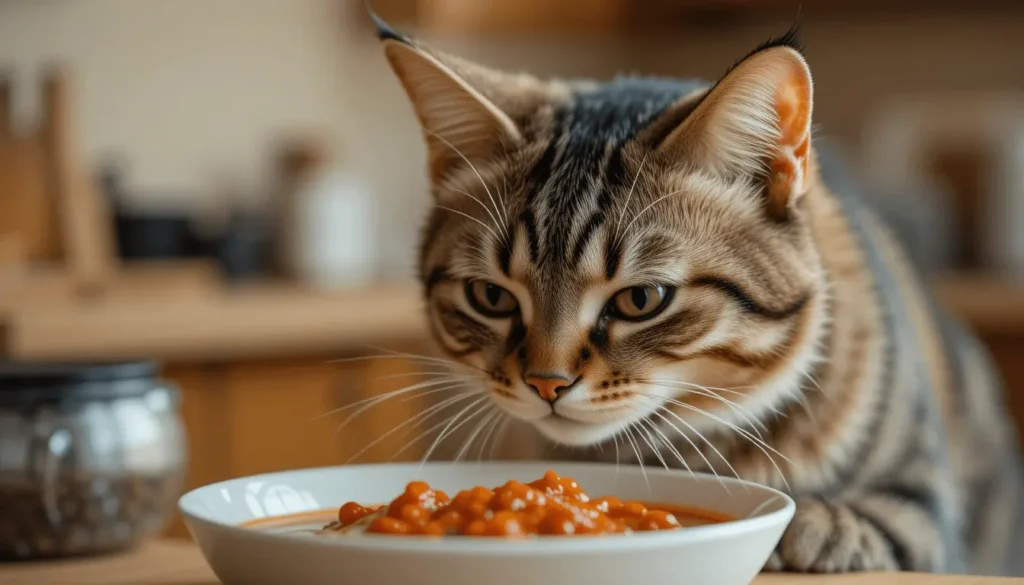
Safe & Delicious Alternatives for Cats
Since spicy foods are a definite no for felines, you might wonder: “What human foods can I safely share with my cat?” The good news is that plenty of healthy, cat-approved alternatives exist—you just need to know which ones to choose. Below, we’ll explore three categories of safe treats, along with tips on how to serve them.
High-Protein Treats: Mimicking a Cat’s Natural Diet
Cats are obligate carnivores, meaning their bodies thrive on animal-based protein. Instead of spicy snacks, try these nutritious, meaty options:
Freeze-Dried Chicken or Salmon
- Why it’s great: Contains no additives or preservatives—just pure, dehydrated meat.
- How to serve: Break into small pieces for training rewards or sprinkle over regular food.
- Bonus: Rich in omega-3 fatty acids (especially salmon), which support skin and coat health.
Cooked, Unseasoned Shrimp or Turkey
- Why it’s safe: Plain, boiled shrimp (peeled and deveined) or unseasoned turkey breast are excellent protein sources.
- How to serve: Cut into tiny, bite-sized pieces to prevent choking.
- Warning: Avoid raw shrimp (risk of bacteria) and never use garlic/onion seasoning.
Pro Tip: Always introduce new foods in small amounts to check for allergies or digestive sensitivity.
Natural Stimulants: Fun & Safe Ways to Excite Your Cat
Some cats go crazy for certain herbs and plants—without any of the risks of spicy foods. Here are two feline favorites:
Catnip (Nepeta cataria)
- Why cats love it: Contains nepetalactone, a compound that triggers a euphoric (but harmless) reaction in about 50-70% of cats (ASPCA).
- How to offer it: Sprinkle dried catnip on scratching posts, toys, or a cat bed.
- Effects: Sniffing = stimulation; eating = calming (great for anxious cats).
Silver Vine (Actinidia polygama)
- Why it’s special: Even cats who don’t react to catnip often go wild for silver vine.
- Bonus benefits: Helps with hairball control and dental health when chewed.
- Where to find it: Sold as sticks, powder, or in cat toys.
Did You Know? Some cats also enjoy valerian root or Tatarian honeysuckle—but always check with your vet first.
Vet-Approved Commercial Treats: Convenient & Trustworthy
If you want store-bought options, look for brands that prioritize feline health:
What to Look For:
- Single-protein sources (e.g., “100% salmon” or “chicken liver”)
- No artificial flavors, colors, or preservatives
- Grain-free (cats don’t need carbs)
Top Recommended Types:
- Dental treats (helps reduce tartar while they chew)
- Probiotic bites (supports gut health)
- Hydrating treats (like broth bites for extra fluids)
Brands to Try:
- PureBites (freeze-dried, limited ingredients)
- Greenies Dental Treats (vet-recommended for oral health)
- Tiki Cat Stix (high-moisture, fish-based puree)
Caution: Avoid treats with “flavor enhancers” or vague terms like “meat by-products.”
Final Verdict: Keep Spice Away From Your Feline Friend
So, can cats handle spicy foods? The answer is a resounding no—and now you know exactly why. From their missing TRPV1 receptors to their carnivorous biology, cats are simply not built to enjoy or digest spicy flavors. More importantly, ingredients commonly found in spicy foods—like garlic, onion, and excess salt—can be toxic to your furry companion.
Instead of sharing your spicy snacks, opt for healthy, species-appropriate alternatives like:
- Freeze-dried meat treats (pure protein, no additives)
- Catnip or silver vine (safe, natural stimulation)
- Vet-approved commercial treats (look for single-protein sources)
By sticking to cat-safe foods, you’ll keep your pet happy, healthy, and far away from unnecessary risks.
Wondering about other feline diet concerns? Check out our ” Safe Or Not ? Cat Food Guide ” for expert advice.
FAQs: Your Spicy Food & Cat Safety Questions, Answered
What happens if my cat accidentally eats spicy food?
- Mild exposure (small lick): Monitor for drooling, pawing at the mouth, or mild stomach upset. Offer fresh water and plain food.
- Larger ingestion (e.g., a bite of jalapeño): Watch for vomiting, diarrhea, or lethargy. Call your vet if symptoms persist.
- Contains toxic ingredients (garlic, onion): Contact your vet or the ASPCA Animal Poison Control (888-426-4435) immediately.
Why does my cat seem curious about spicy food if they hate it?
Cats are naturally investigative—they’ll sniff anything new, even if their instincts later tell them to avoid it. The strong smell of spices might pique their interest, but their taste buds and digestive system will reject it.
Are any human spices safe for cats?
- Most are unnecessary, but tiny amounts of cat-safe herbs (like parsley or basil) are fine. Never give:
- Chili powder
- Garlic/onion powder
- Salt-heavy seasonings
Can spicy food kill a cat?
While a single lick likely won’t be fatal, repeated exposure or large quantities of toxic ingredients (like garlic) can cause organ damage or hemolytic anemia. When in doubt, keep spicy foods out of reach.
What’s the best alternative to spicy human food for cats?
Try high-protein, low-ingredient treats like:
- Plain cooked chicken (no seasoning)
- Freeze-dried salmon (rich in omega-3s)
- Commercial dental treats (supports oral health)



